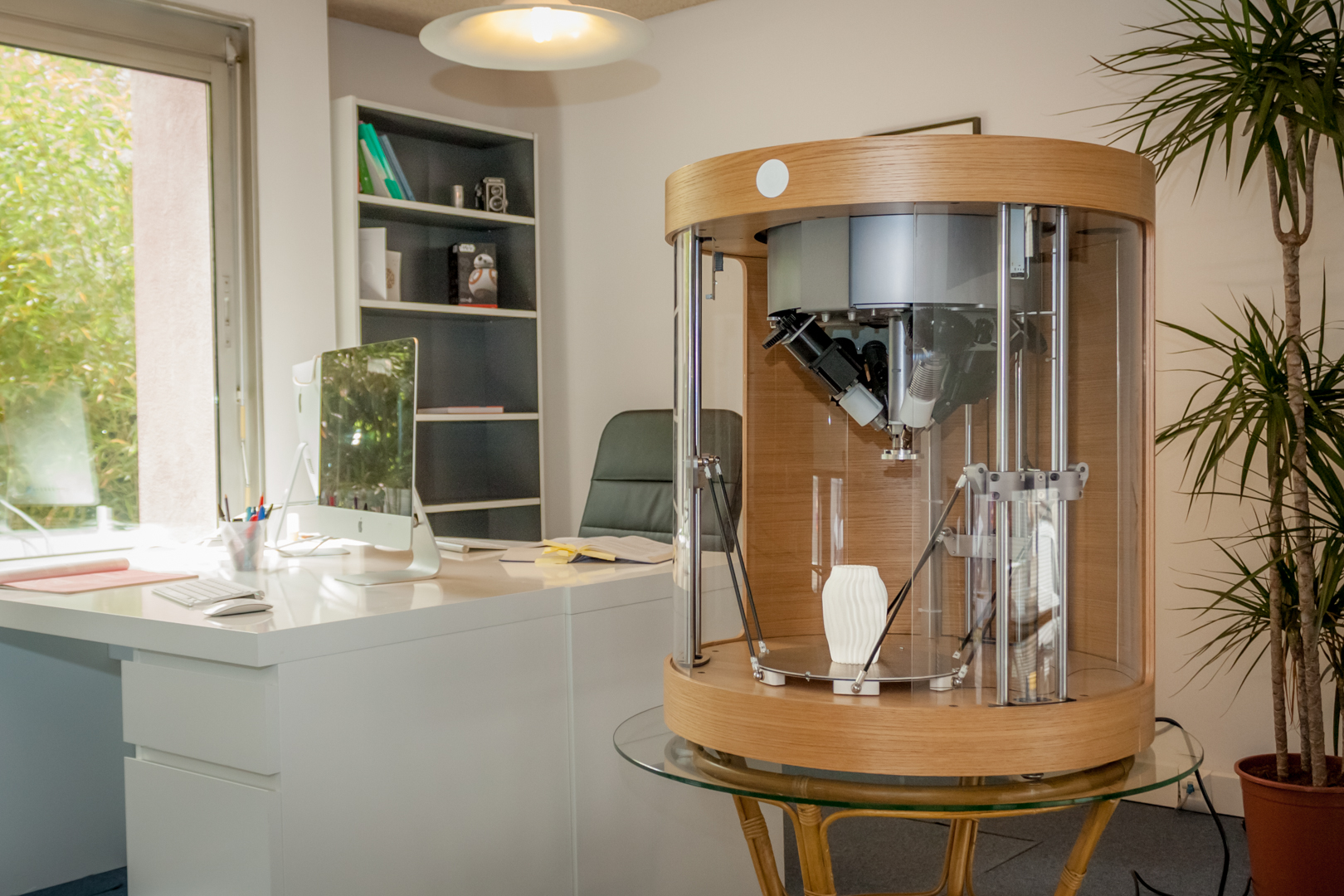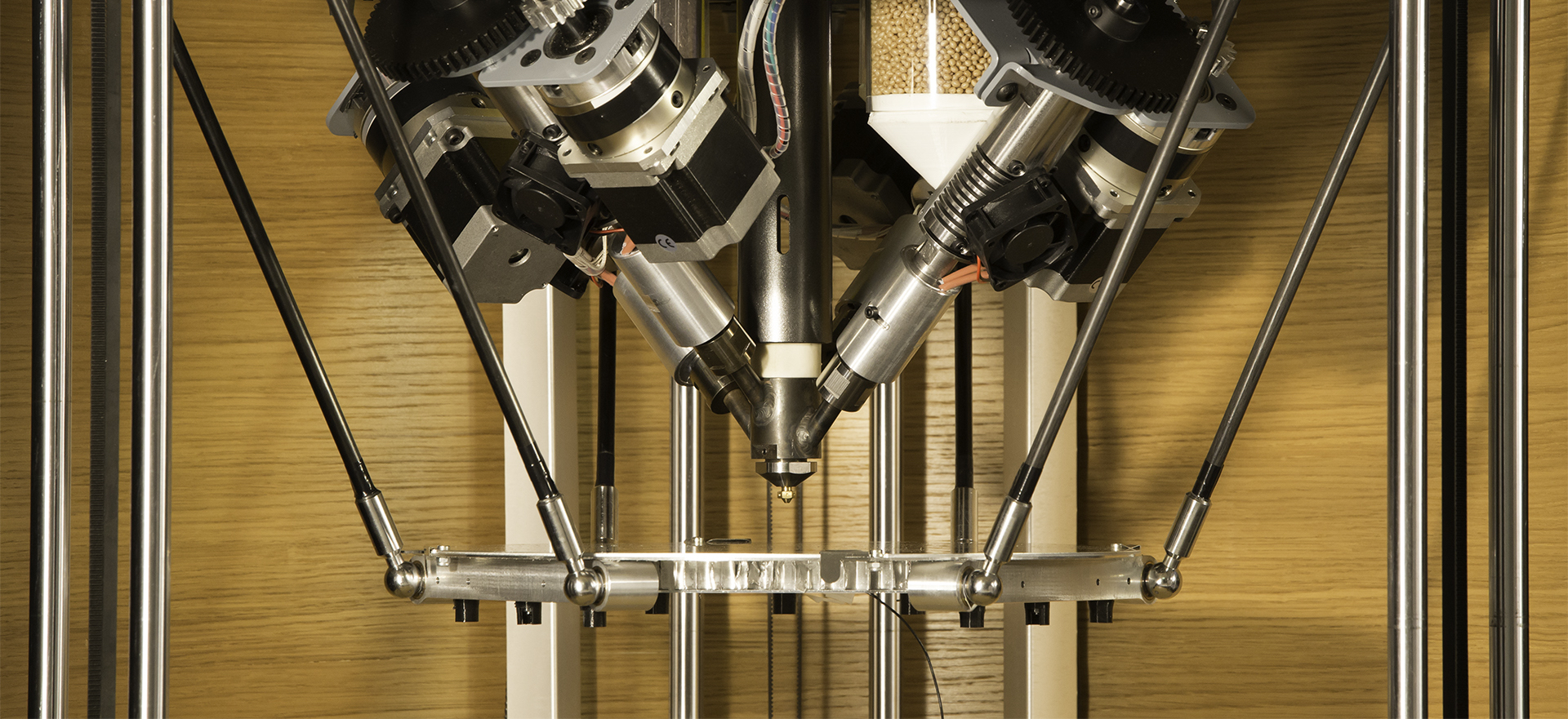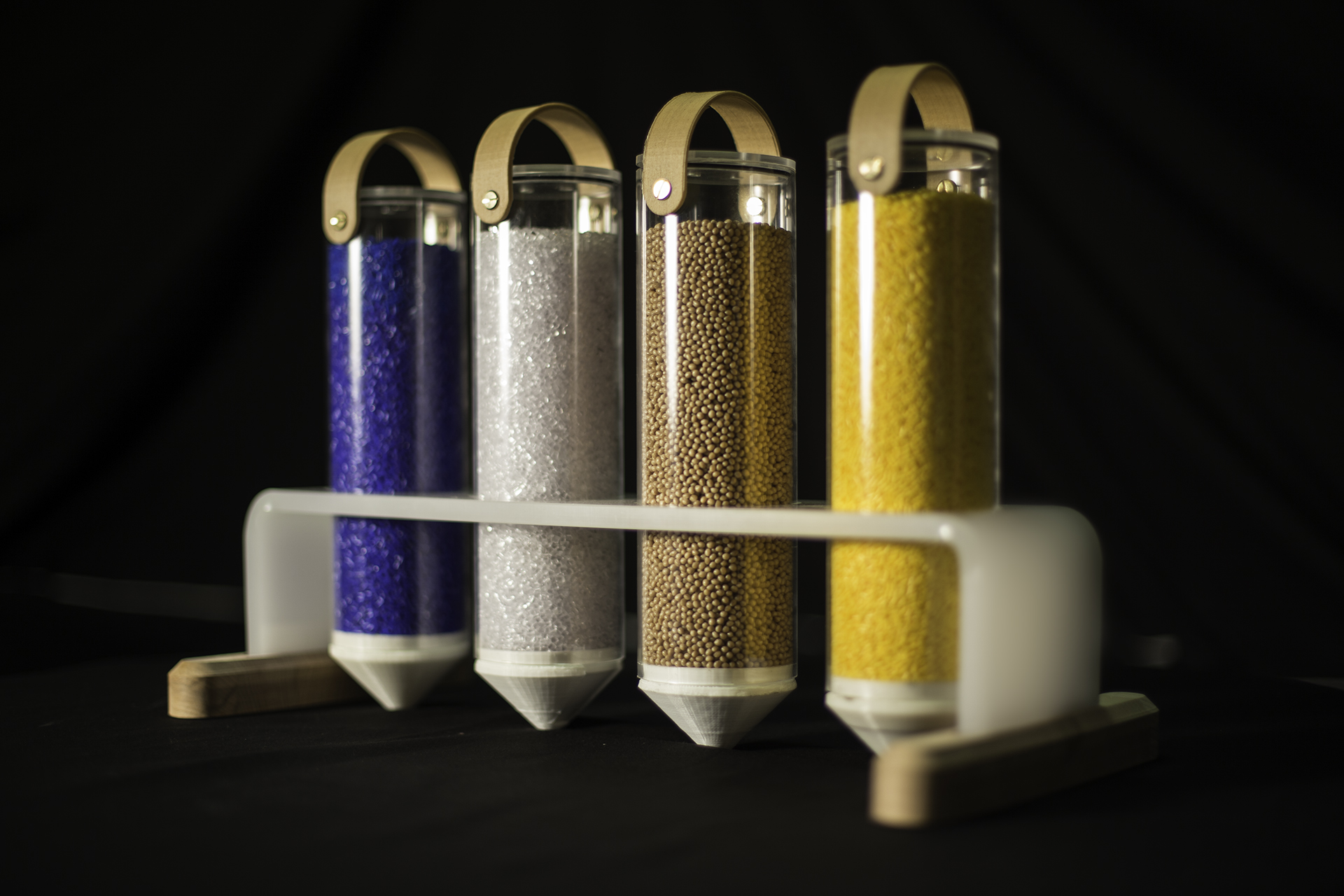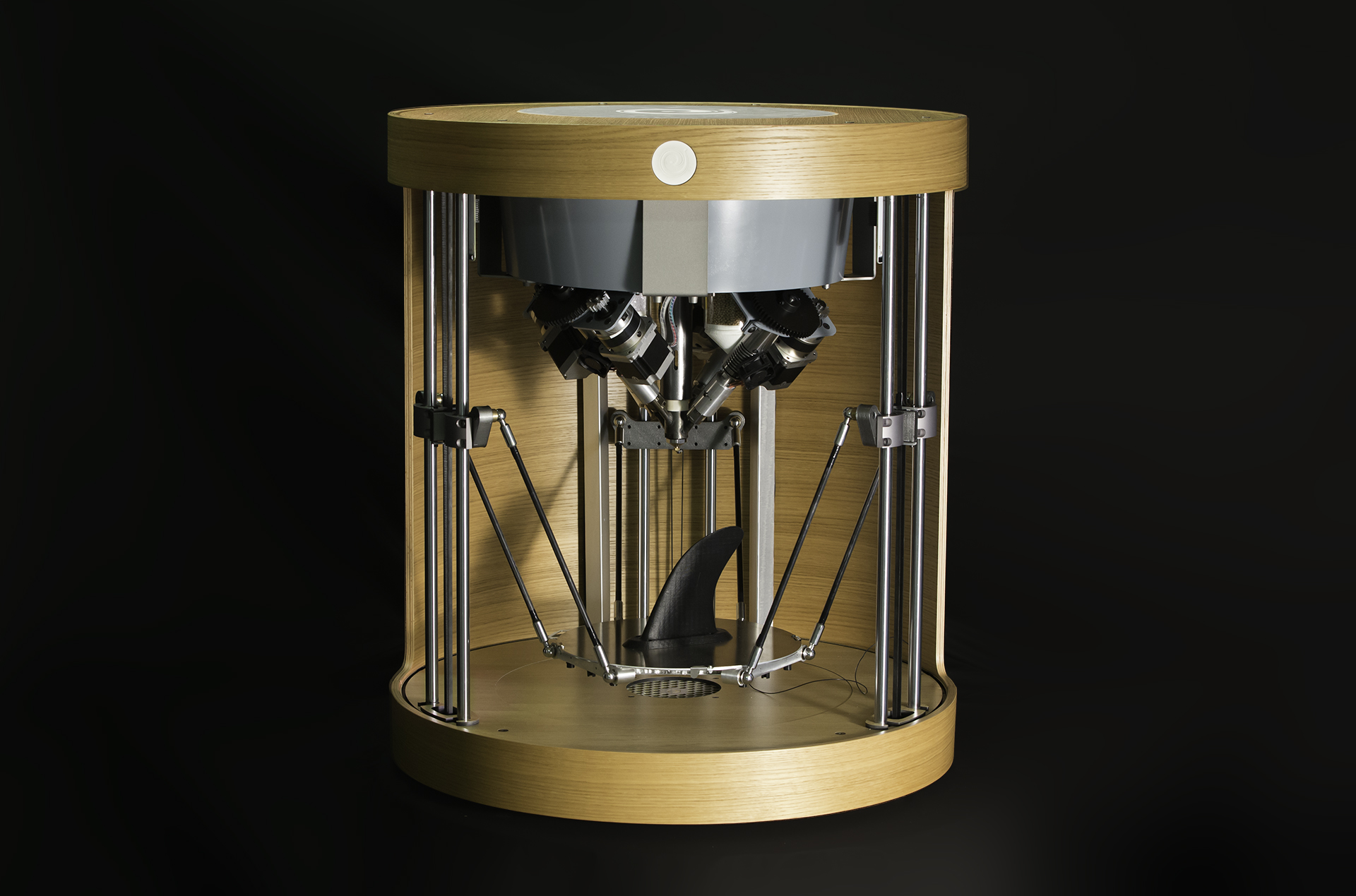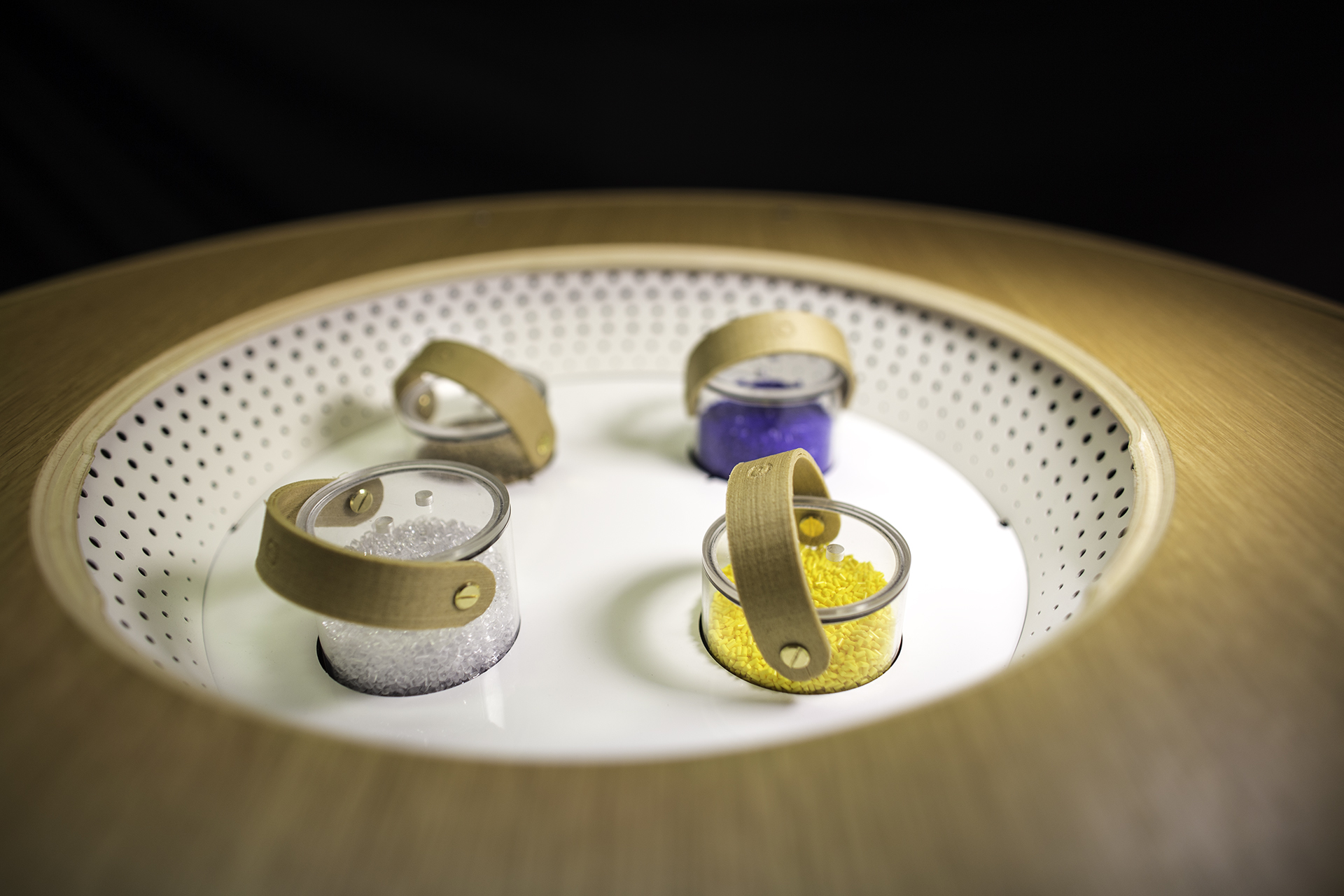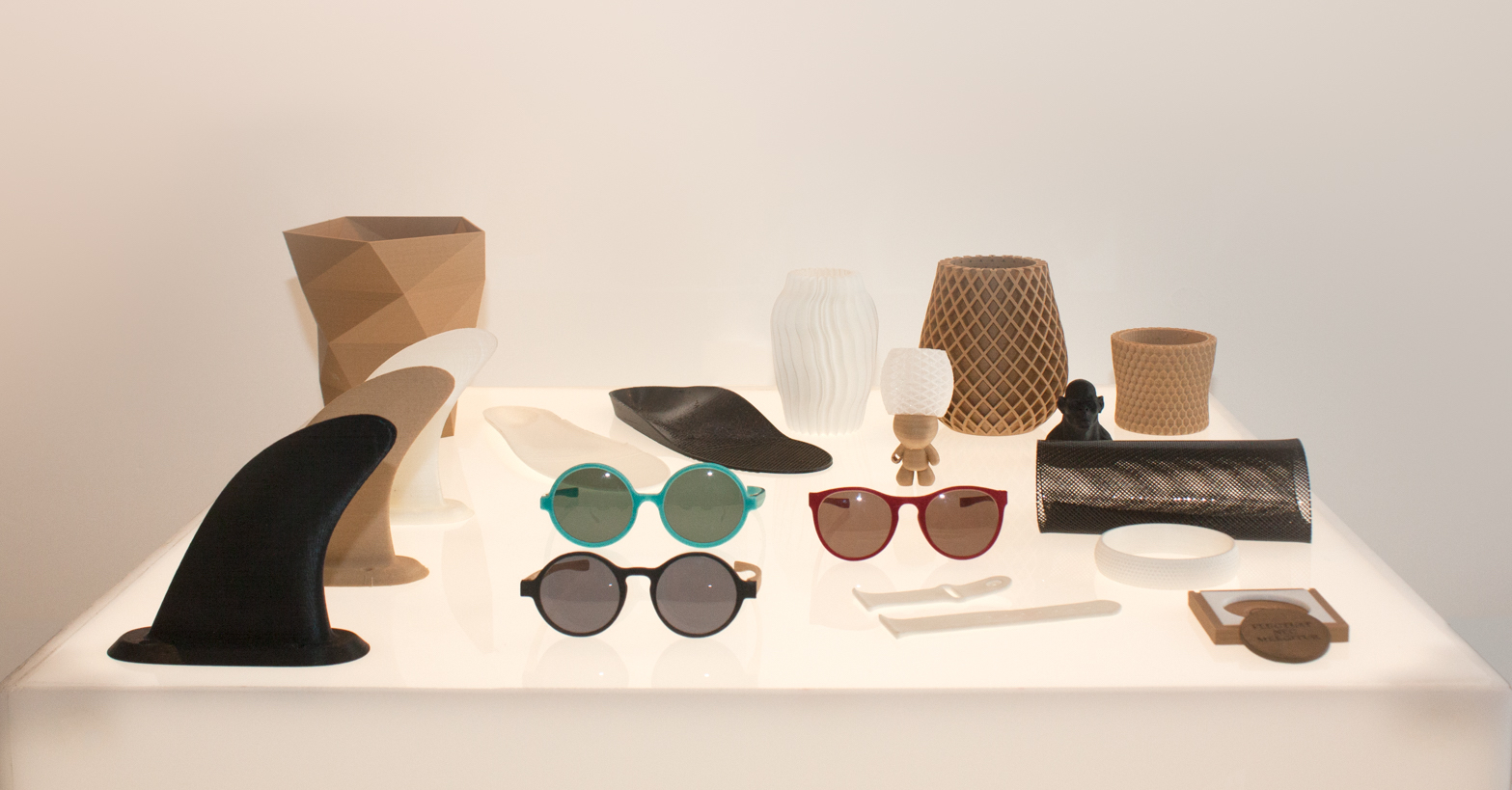“We’ve been in R&D stealth mode for five years,” CEO Cédric Michel tells Digital Trends. “It was difficult to spend so long not talking about it to anyone. It’s a great moment for us to finally be able to go public.”
The wood-framed Pam printer operates speedily, at up to 400 mm/s, and is able to print using a wide variety of materials — including thermoplastics, silicones, composites, natural fibers, metal particles, and more. Perhaps most enticing of all is the fact that it promises to print up to four different materials at the same time, with the ability to pull off feats like printing sunglasses with lenses made of a different material — all in one single process.
Pam isn’t the only 3D printer to use pellets. For instance, the enormous SeeMeCNC PartDaddy delta printer uses a pellet hopper instead of spools of filament. However, the use of pellets definitely puts Cédric Michel’s new machine in a minority when it comes to smaller-size 3D printers.
“Using pellets brings a number of challenges,” 3D printing expert Richard Horne, who has been experimenting and developing open-source 3D printing technology as part of the global RepRap project, tells Digital Trends. “One of the difficult aspects I found when experimenting using pellets is that it’s tricky to stop the flow of plastic — or retract back a little, so it can be hard to control oozing.”
However, he also points out that buying pellets can be considerably lower cost than filament-based plastic, and that many more materials are available in pellet form. “This could really be a breakthrough product for desktop 3D printing,” he says.
But will purchasers of the Pam 3D printer be trapped in an ecosystem having to buy all their future pellets from Pollen? While Cédric Michel recommends that customers do this — due to the high quality of the company’s materials, and the fact that all the material parameters are already programmed into the Pam 3D printer — he says that the system is also open in a way that allows customers to use their own materials if they so wish.
Pam carries a somewhat hefty pre-order price tag of €8,000 ($8,900), although Michel says that this actually makes it low-cost compared to similarly positioned 3D printers. If you’re interested in picking one up, it’s possibly worth doing now — since the price is set to double by 2017 when Pam is officially available to buy.
We’re definitely fascinated to see where this goes!
